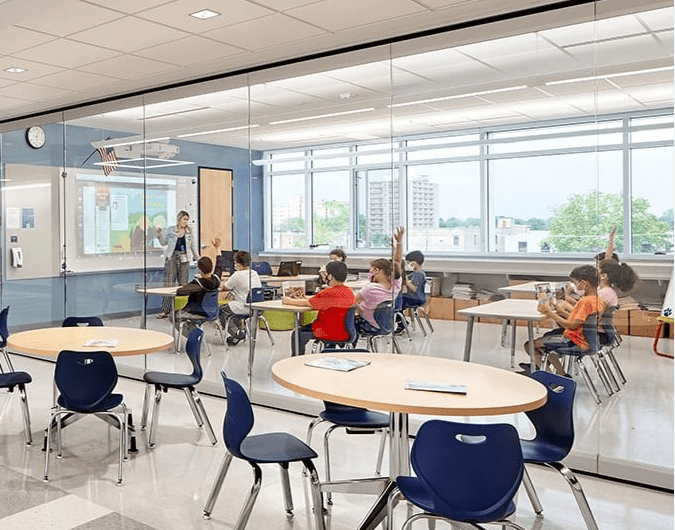There are many benefits to using large windows and glass walls in schools to maximise natural light. Here are some of the most important ones:
- Improved student performance: Studies have shown that students who learn in well-lit classrooms have better academic performance than those who learn in dimly lit classrooms. Natural light has been shown to improve alertness, concentration, and mood, which can lead to better learning outcomes.
- Reduced stress levels: Natural light can also help to reduce stress levels. When people are exposed to natural light, their bodies produce more serotonin, a mood-boosting neurotransmitter. This can help to reduce anxiety and improve overall well-being.
- Increased productivity: Natural light can also help to increase productivity. Studies have shown that people who work in well-lit offices are more productive than those who work in dimly-lit offices. This is likely because natural light helps to improve alertness and concentration.
- Improved health: Natural light has also been shown to have several health benefits. It can help to boost the immune system, improve sleep quality, and reduce the risk of depression.
- Reduced energy costs: Using natural light can help to reduce energy costs. Less artificial light is needed when sunlight is used to light a space. This can save money on electricity bills.

In addition to these benefits, large windows and glass walls can help create a more inviting and attractive learning environment. They can also help to improve communication and collaboration among students and teachers.
Of course, there are also some potential drawbacks to using large windows and glass walls in schools. For example, they can make classrooms more susceptible to heat gain and glare. However, these drawbacks can be minimised by using the correct type of glass and by designing the windows and walls carefully.
The benefits of using large windows and glass walls in schools far outweigh the drawbacks. When used effectively, they can create a healthier, more productive, and more enjoyable learning environment for students and teachers.

Here are some additional tips for maximising the benefits of natural light in schools:
- Orient the school so that classrooms receive as much natural light as possible.
- Use large windows and glass walls to let in as much natural light as possible.
- Choose the right type of glass for the climate. For example, low-emissivity glass can help to reduce heat gain in warm climates.
- Install blinds or shades to control the amount of light entering the classroom.
- Place desks and chairs so that students are facing the windows.
- Keep the windows clean to allow as much light to enter as possible.
By following these tips, schools can create a learning environment that is bright, comfortable, and conducive to learning.

